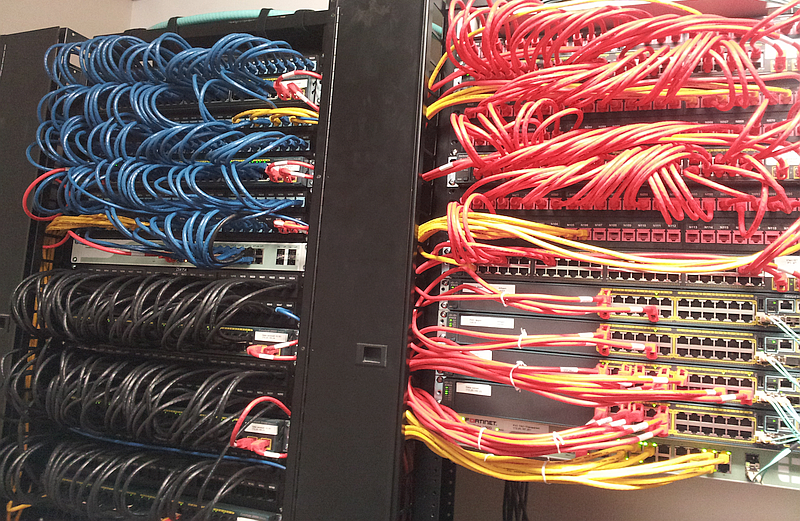Snagless RJ45 Connectors – the Odd Request
Snagless RJ45 connectors are that odd request that my department makes from time to time. Why do you need RJ45 connectors anyway, it’s the invariable answer from supervisors, and the typical reminder: “You have all sorts of patchcords, all dimensions…” Well, first of all, we sysadmins never have all the patchcords dimensions available. The IT racks should be something that should be kept as tidy as possible, and one way is to have custom length of the patchcords.
Depending on your infrastructure, you might want or might not want to use handmade patchcords in your racks; however, in many cases this is totally acceptable. You can probably make a Cat 5 patchcord, but you won’t be able to make a Cat 6 one. In other words your hand made patchcords will be able to run at Gigabit speeds, but not at 10 Gigabit speeds, even with the proper connectors and cables. Having said that, most of the equipment in a business server room is connected into a Gigabit switch or at lower speeds, so this would not be a problem.
Custom Patchcords – Always Broken Lokcing Tabs
The major problem with all the handmade Ethernet patchcords and cables is that the locking tab is breaking. I probably don’t have to explain why broken tabs are bad; they will not be secured into the equipment’s jack, resulting in intermittent data loss, or even disconnection.
There are two reasons for the locking tabs breaking so often. Firstly, the little locking tab is very fragile, and we can’t change that, it is fragile to keep the costs down. The other reason is the design, the locking tab sticks out, and it is very easy to get snagged and broken off. All store-bought cables come with a snagless boot; it’s the standard these days. All the cables with broken locking tabs don’t have the boots, because they are terminated in place, by either a datacom tech, or an admin.
These plugs from Panduit are the best snagless RJ45 connectors.
The connectors are meant for patch cords, and they are rated as providing Category 5e performance.
The patented tangle-free plug latch prevents snags, hence breaking.
They are easy release, unlike some snagless boots, and they save time on frequent moves, adds, and changes.
The design facilitates easy insertion and termination of wires
What Is the Solution for Broken RJ45 Connectors
One of the solutions to fix the snagging network cables is to install a "snagless" boot over the cable, before crimping the connector. After crimping, just push the boot over the connector and the boot will protect the little tab.
My preferred way to fix this is to use snagless RJ45 connectors, and a boot. This ensures the plug will not break ever, unless you purposely do it. You can also use just the snagless connectors, they are very good, and I do it very often, but if I have both the snagless connectors and the snagless boots, I will use both for optimization. The snagless plugs are slightly more expensive than the regular ones, but when you draw the line, and consider the troubleshooting needed on the long term, and the fact that sooner or later those RJ45 connectors will break and will need to be replaced, the additional cost is worth paying.
Like I already mentioned before, with the low prices for commercial made patchcords, and the quality ensured by a machine made ethernet cable, there is no need to make your own, it's just not practical.
This cables are made in a commercial facility, they are tested, and they come in a variety of lengths, just choose the one that is right for you. You can even get to choose the color, so you can color code your patch panel connections, so everything looks tidy, and easy to follow.


